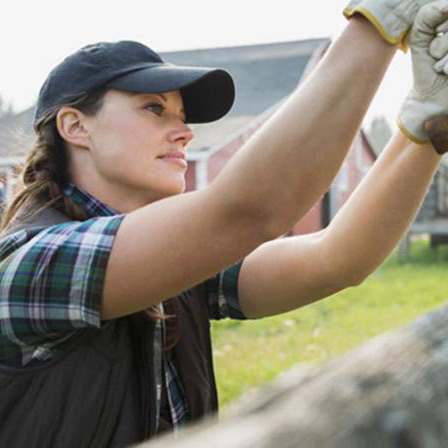Here’s how to maintain good posture and stay safe while lifting, carrying and reaching.
When the holidays roll around, we often drag out festive décor from the shed, garage, basement and crawl spaces. But all that hefting, hauling and hanging-up of items can cause our backs to protest with aches and pains. And if we’re not careful, we can incur an injury. The best way to stay safe this holiday season is to follow the necessary guidelines.
Aaron Yang, M.D., of Vanderbilt’s Spine Center, outlines some best practices for posture and safety while holiday decorating and performing other chores.
Plan ahead.
Yang said many injuries could be prevented with a solid plan for moving something from point A to point B. Think about a few key things ahead of time before attempting to move an object. The first step is to decide whether you need help lifting a heavier item. Enlist that assistance before proceeding, and work out a plan with your lifting partner. Know where your point B is, and determine places to set down the item and rest, if necessary, along the way. Communicate all of this with your helper before getting started with the decorating.
Maintain good posture while lifting.
- Face the object with your feet spread about shoulder-width apart. “You should never twist and pick anything up,” Yang said.
- Bend at your hips and your knees. “You should not bend at your waist,” Yang added. “We put extensive pressure on our back if we bend at our waist.”
- Keep your head up. “Our automatic tendency is to keep our head down the entire time,” Yang said. “But that also promotes your back to bend.” If you keep your eyes up, however, you encourage your back to stay as straight as possible.
- Keep the object close to you. This makes the item easier to lift and carry, Yang explained.
- When putting the object down, follow the same rules for lifting. Make sure the object is still close to your body, your head is up, you’re facing the object rather than twisting away from it, and you bend at your hips and knees rather than at your waist.
Avoid problematic positions.
We can also incur aches, pains and injuries from reaching, stretching or working too long in one position during the holidays. A good rule of thumb, Yang said, is to keep your work at eye level. That may mean getting out a ladder or a step stool while putting up lights, hanging ornaments or adding other décor. You may not feel pain while looking or reaching up and working for a period of time, Yang explained, but a few hours later, you might experience soreness from being in that position. “As much as you can, take breaks,” Yang said. This gives you a chance to check in with your body and ultimately stay safe the rest of this holiday season.
Practice prevention.
“I think what happens a lot with injuries in general is that we’re often holding postures that we’re not typically in,” he explained. This can happen during the holidays or come spring, when we return to yard work and gardening. That’s why prevention involves not only being diligent about proper lifting and movement practices but also thinking about back health year-round. Yang recommends focusing on core strength and flexibility so that your body is somewhat conditioned for the activities you want to do in winter (or any season), whether that be decorating for the holidays, going ice skating or shoveling snow.

The Vanderbilt Spine Center treats patients from across the Southeast for back pain, sciatica, whiplash and other conditions of the spine, offering a full range of treatments including non-surgical options. If surgery is necessary, the Vanderbilt Spine Center team provides an extraordinary level of experience and expertise for each patient’s needs. For more information, click here or call 615-875-5100.


